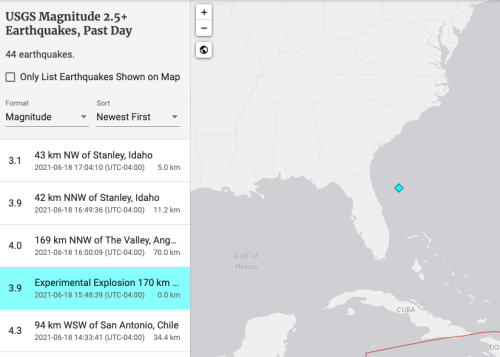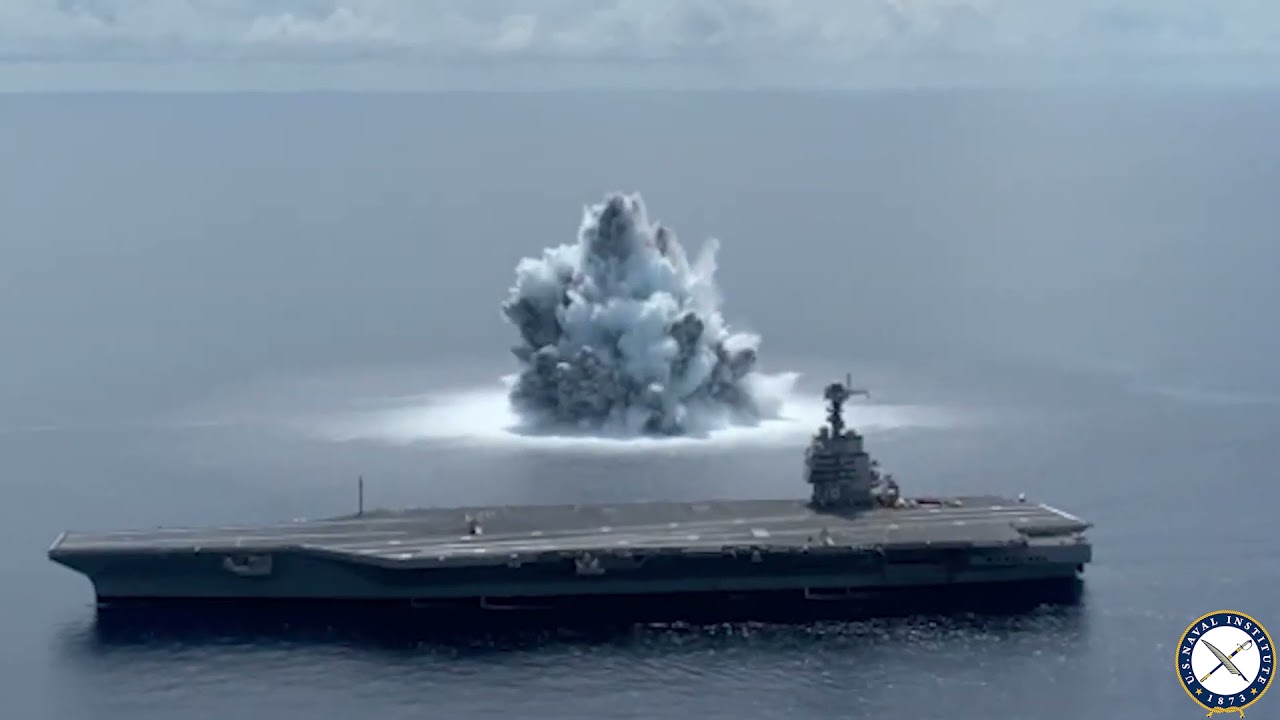The United States Navy has been carrying out ‘Full Ship Shock Trials’ off the east coast. The 40,000lb (18,143kg) explosion was detonated as part of a test to assess the aircraft carrier USS Gerald R. Ford’s ability to withstand battle conditions. The US Geological Survey registered the explosion as a 3.9 magnitude earthquake. No record of the marine life casualties!
“The first-in-class aircraft carrier was designed using advanced computer modeling methods, testing, and analysis to ensure the ship is hardened to withstand battle conditions, and these shock trials provide data used in validating the shock hardness of the ship,” the service said in a Saturday statement.
“The U.S. Navy has conducted FSSTs over several decades, most recently for the Littoral Combat Ships USS Jackson (LCS-6) and USS Milwaukee (LCS-5) in 2016; as well as for the San Antonio-class amphibious transport dock USS Mesa Verde (LPD-19) in 2008, the amphibious assault ship USS Wasp (LHD 1) in 1990, and the guided-missile cruiser USS Mobile Bay (CG-53) in 1987. The last aircraft carrier to execute FSST was USS Theodore Roosevelt (CVN-71) in 1987.”
Ford commanding officer Capt. Paul Lanzilotta told USNI News in March aboard the carrier that the crew had been busy preparing for the event.
“That’s quite a bit of work when you have a ship with 5,000 spaces in it, so we have to prepare all of our gear,” he said. “We’re also going to prepare the crew: so the crew has to know what to expect, they need to practice their damage control procedures because that’s something that we all need to be good at, and when we shock the ship we need to make sure that we have the ship in as ready a condition as we can.”
The carrier was scheduled for three separate explosions, but the service may cap the tests at two blasts, USNI News understands.
Hmmm, what about the environment?

